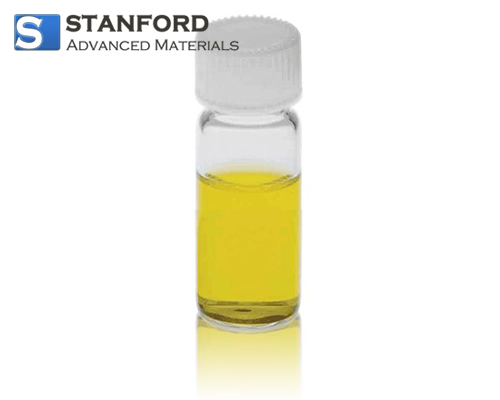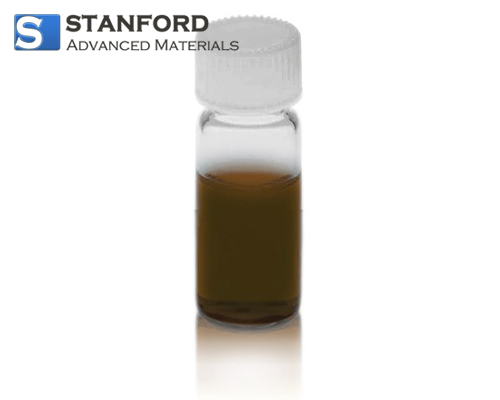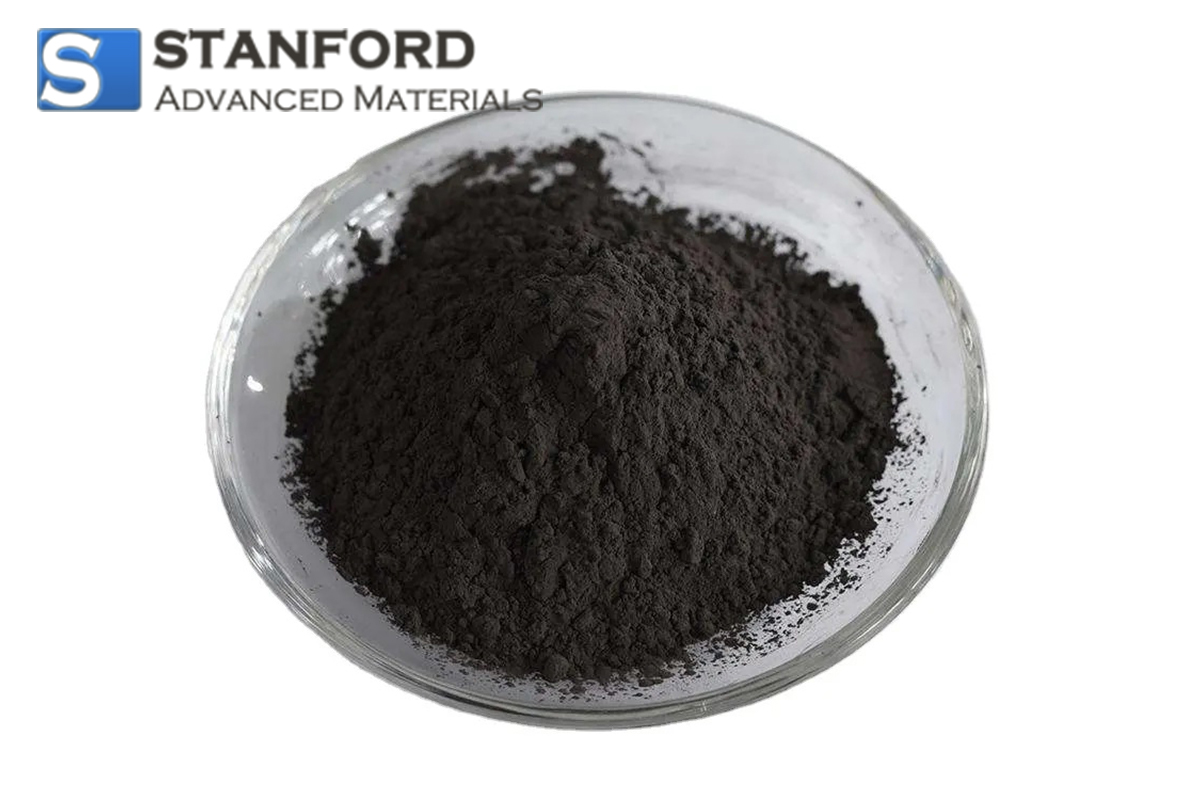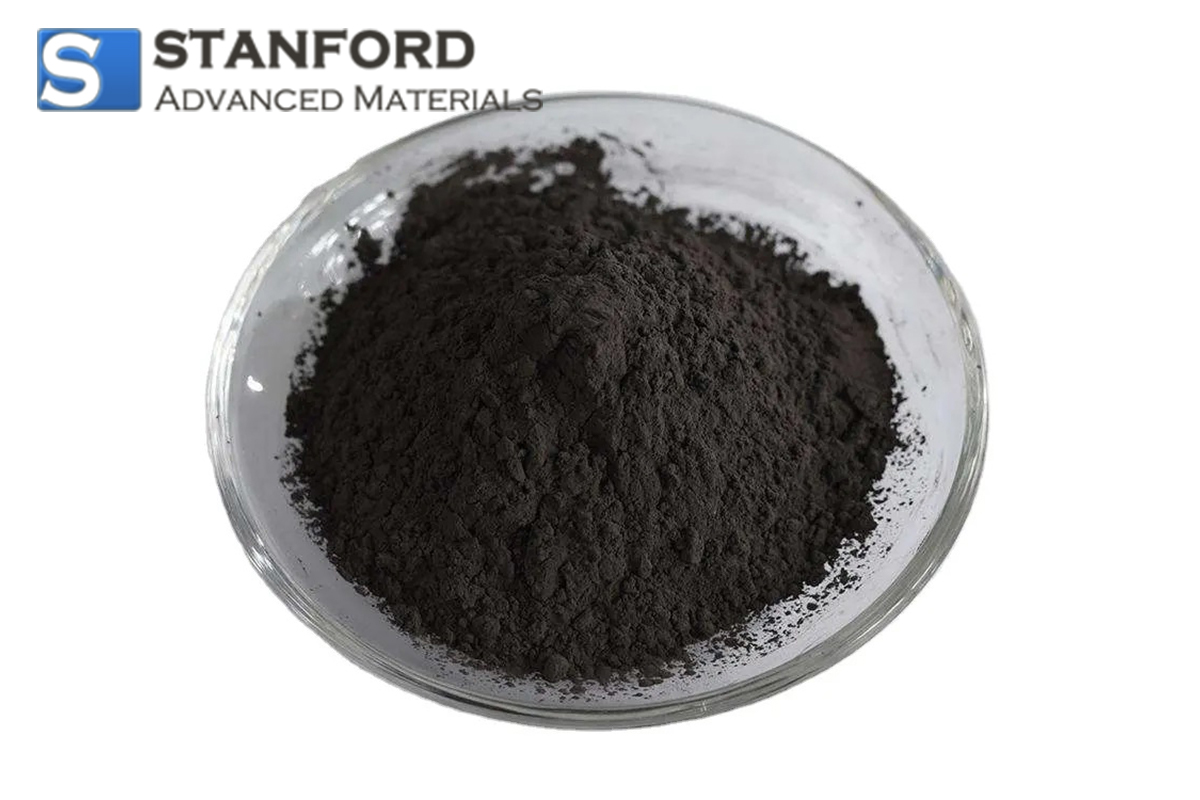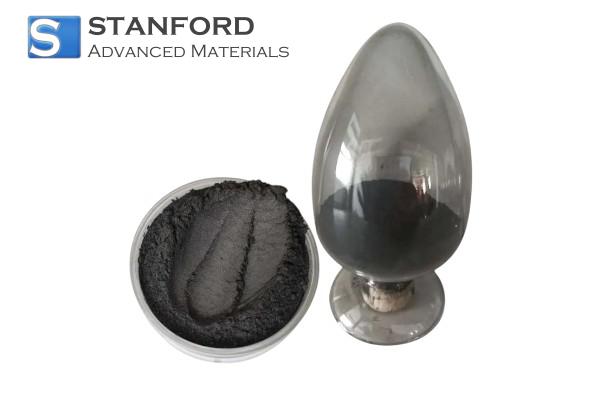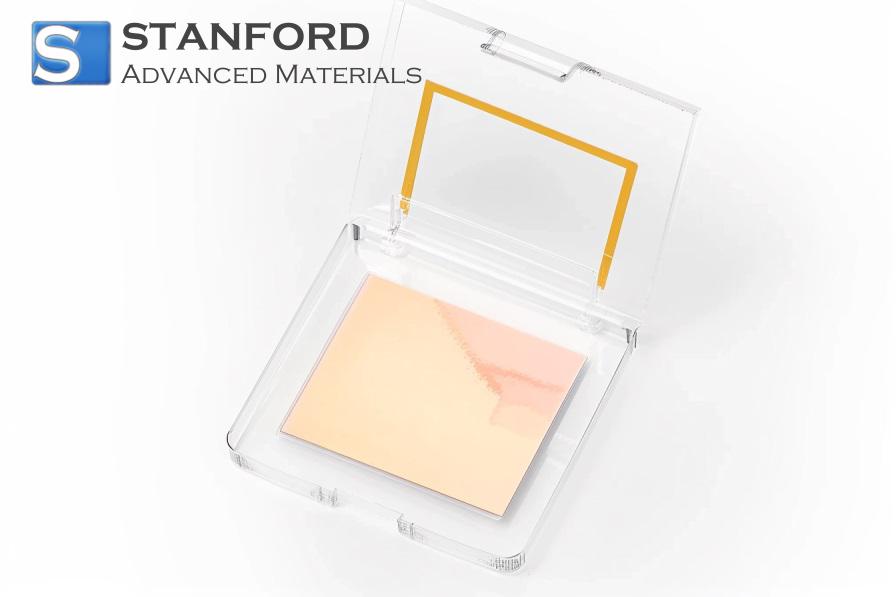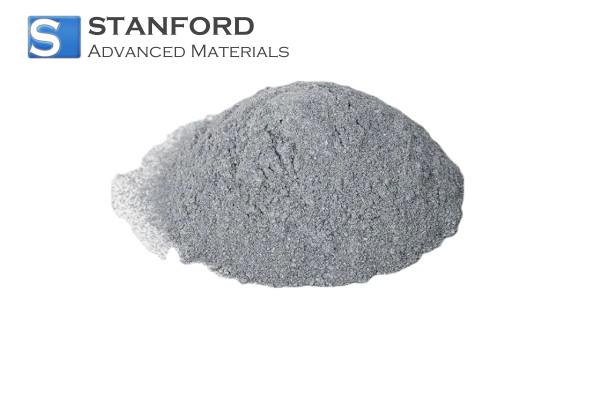SECTION 1. IDENTIFICATION
Product Name: Graphene Oxide Dispersion
CAS #:
Relevant identified uses of the substance: Scientific research and development
Supplier details:
Stanford Advanced Materials
E-mail: sales@samaterials.com
Tel: (949) 407-8904
Address: 23661 Birtcher Dr., Lake Forest, CA 92630 U.S.A.
SECTION 2. HAZARDS IDENTIFICATION
Classification of the substance or mixture
GHS Classification in accordance with 29 CFR 1910 (OSHA HCS)
Eye irritation (Category 2A), H319
Respiratory system, H335
For the full text of the H-Statements mentioned in this Section, see Section 16.
GHS Label elements, including precautionary statements
Pictogram
Signal word: None
Hazard statement(s)
H319 Causes serious eye irritation.
H335 May cause respiratory irritation.
Precautionary statement(s)
P261 Avoid breathing dust/ fume/ gas/ mist/ vapours/ spray.
P264 Wash skin thoroughly after handling.
P271 Use only outdoors or in a well-ventilated area.
P280 Wear protective gloves/ eye protection/ face protection.
P304 + P340 IF INHALED: Remove victim to fresh air and keep at rest in a position comfortable for
breathing.
P305 + P351 + P338 IF IN EYES: Rinse cautiously with water for several minutes. Remove contact
lenses, if present and easy to do. Continue rinsing.
P312 Call a POISON CENTER or doctor/ physician if you feel unwell.P337 + P313 If eye irritation persists: Get medical advice/ attention.
P403 + P233
Store in a well-ventilated place. Keep container tightly closed.
P405 Store locked up.
P501 Dispose of contents/ container to an approved waste disposal plant.
Hazards not otherwise classified (HNOC) or not covered by GHS - None
SECTION 3. COMPOSITION/INFORMATION ON INGREDIENTS
Substances
Synonyms : Carbon Nanotubes, CAS-No. : 308068-56-6
Graphene CAS#: 7782-42-5
Carbon Black CAS#: 7440-44-0
Water CAS#: 7732-18-5
SECTION 4. FIRST AID MEASURES
Description of first aid measures
General advice
Consult a physician. Show this safety data sheet to the doctor in attendance.
Move out of dangerous area.
If inhaled
If breathed in, move person into fresh air. If not breathing, give artificial respiration. Consult a
physician.
In case of skin contact
Wash off with soap and plenty of water. Consult a physician.
In case of eye contact
Rinse
thoroughly with plenty of water for at least 15 minutes and consult a physician.
If swallowed
Never give anything by mouth to an unconscious person. Rinse mouth with water. Consult a physician.
Most important symptoms and effects, both acute and delayed
The most important known symptoms and effects are described in the labeling (see section 2.2) and/or
in section 11
Indication of any immediate medical attention and special treatment needed
no data available
SECTION 5. FIREFIGHTING MEASURES
Extinguishing media
Suitable extinguishing media
Use water spray, alcohol-resistant foam, dry chemical or carbon dioxide.
Special hazards arising from the substance or mixture
Carbon oxides
Advice for firefighters
Wear self contained breathing apparatus for firefighting if necessary.
Further information
no data available
SECTION 6. ACCIDENTAL RELEASE MEASURES
Personal precautions, protective equipment and emergency procedures
Use personal protective equipment. Avoid dust formation. Avoid breathing vapours, mist or gas.
Ensure adequate ventilation. Evacuate personnel to safe areas. Avoid breathing dust.
For personal protection see section 8.
Environmental precautions
Do not let product enter drains.
Methods and materials for containment and cleaning up
Pick up and arrange disposal without creating dust. Sweep up and shovel. Keep in suitable, closed
containers for disposal.
Reference to other sections
For disposal see section 13.
SECTION 7. HANDLING AND STORAGE
Precautions for safe handling
Avoid contact with skin and eyes. Avoid formation of dust and aerosols.
Provide appropriate exhaust ventilation at places where dust is formed.
Normal measures for preventive fire protection.
For precautions see section 2.2.
Conditions for safe storage, including any incompatibilities
Keep container tightly closed in a dry and well-ventilated place.
Specific end use(s)
Apart from the uses mentioned in section 1.2 no other specific uses are stipulated
SECTION 8. EXPOSURE CONTROLS/PERSONAL PROTECTION
Control parameters
Components with workplace control parameters
Contains no substances with occupational exposure limit values.
Exposure controls
Appropriate engineering controls
Handle in accordance with good industrial hygiene and safety practice. Wash hands before breaks
and at the end of workday.
Personal protective equipment
Eye/face protection
Safety glasses with side-shields conforming to EN166 Use equipment for eye protection tested and
approved under appropriate government standards such as NIOSH (US) or EN 166(EU).
Skin protection
For any handling steps where the substance is in particulate form or in a suspension with pure water
where the substance is not solubilized, the gloves must be comprised of material that successfully
passes ASTM F-1671.
For any handling steps where the substance is part of a carrier liquid, other than the aqueous
suspension noted in the previous paragraph, gloves must be comprised of material that successfully
passes ASTM F-739 (continuous liquid contact method). Gloves must be changed before they show
degradation and before the designated breakthrough time for the carrier liquid (as determined by the
ASTM F-739 testing or by the manufacturer).
Handle with gloves. Gloves must be inspected prior to use. Use proper glove removal technique
(without touching glove's outer surface) to avoid skin contact with this product. Dispose ofcontaminated gloves after use in accordance with applicable laws and good laboratory practices.
Wash and dry hands.
Body Protection
Impervious clothing, The type of protective equipment must be selected according to the concentration
and amount of the dangerous substance at the specific workplace.
Respiratory protection
The EPA mandates the use of full face respirators with minimum N100 grade cartridges if there is any
risk of exposure to the dust.
For nuisance exposures use type P95 (US) or type P1 (EU EN 143) particle
respirator.
For higher level protection use type OV/AG/P99 (US) or type ABEK-P2 (EU EN 143) respirator
cartridges. Use respirators and components tested and approved under appropriate government
standards such as NIOSH (US) or CEN (EU).
Control of environmental exposure
Do not let product enter drains.
SECTION 9. PHYSICAL AND CHEMICAL PROPERTIES
Information on basic physical and chemical properties
Appearance: liquid
Odor: no data available
Odor Threshold: no data available
pH: no data available
CNTs Melting point/freezing point: 3,652 -3,697 °C (6,606 -6,687 °F)
Initial boiling point and boiling range: no data available
Flash point: no data available
Evaporation rate: no data available
Flammability (solid, gas): no data available
Upper/lower flammability or explosive limits: no data available
Vapor pressure: no data available
Vapor density: no data available
Relative density: no data available
Water solubility: insoluble
Partition coefficient-noctanol/water: no data available
Auto-ignition temperature: no data available
Decomposition temperature: no data available
Viscosity: no data available
Explosive properties: no data available
Oxidizing properties: no data available
Other safety information: no data available
SECTION 10. STABILITY AND REACTIVITY
Reactivity
no data available
Chemical stability
Stable under recommended storage conditions.
Possibility of hazardous reactions
no data available
Conditions to avoid
no data availableIncompatible materials
Strong oxidizing agents
Hazardous decomposition products
Other decomposition products - no data available
In the event of fire: see section 5
SECTION 11. TOXICOLOGICAL INFORMATION
Information on toxicological effects
Acute toxicity
no data available
Inhalation: no data available
Dermal: no data available
Skin corrosion/irritation
no data available
Serious eye damage/eye irritation
no data available
Respiratory or skin sensitization
no data available
Germ cell mutagen city
no data available
Carcinogenicity
no data available
Reproductive toxicity
no data available
Specific target organ toxicity - single exposure
Inhalation - May cause respiratory irritation.
Specific target organ toxicity - repeated exposure
no data available
Aspiration hazard
no data available
Additional Information
RTECS: Not available
To the best of our knowledge, the chemical, physical, and toxicological properties have not been
thoroughly investigated.
SECTION 12. ECOLOGICAL INFORMATION
Toxicity
no data available
Persistence and degradability
no data available
Bioaccumulative potential
no data available
Mobility in soil
no data available
Results of PBT and vPvB assessment
PBT/vPvB assessment not available as chemical safety assessment not required/not conducted
Other adverse effects
no data available
SECTION 13. DISPOSAL CONSIDERATIONS
Waste treatment methods
Product
Offer surplus and non-recyclable solutions to a licensed disposal company. Contact a licensed
professional waste disposal service to dispose of thismaterial.
Contaminated packaging
Dispose of as unused product
SECTION 14. TRANSPORT INFORMATION
DOT (US)
Not dangerous goods
IMDG
Not dangerous goods
IATA
Not dangerous goods
SECTION 15. REGULATORY INFORMATION
SARA 302 Components
SARA 302: No chemicals in this material are subject to the reporting requirements of SARA Title III,
Section 302.
SARA 313 Components
SARA 313: This material does not contain any chemical components with known CAS numbers that
exceed the threshold (De Minimis) reporting levels established by SARA
Title III, Section 313.
SARA 311/312 Hazards
This product does not contain any chemicals known to State of California to cause cancer, birth
defects,
SECTION 16. OTHER INFORMATION
Safety Data Sheet according to Regulation (EC) No. 1907/2006 (REACH). The above information is
believed to be correct but does not purport to be all inclusive and shall be used only as a guide. The
information in this document is based on the present state of our knowledge and is applicable to the
product with regard to appropriate safety precautions. It does not represent any guarantee of the
properties of the product.


